

André Gali
In this interview, André Gali talks to textile artist Ellen Grieg about her dyeing processes, working sculpturally with rope and her artistic practice as a long-term research project.
The artist Ellen Grieg (b. 1948) works in an abstract idiom in textile materials. She focused for many years on tapestry, but more recently, her expression has been defined by thick dyed nylon rope hanging freely in rooms. The rope is often dominated by a strong colour – yellow or pink – and shaped like thick spirals dissolving as they cascade downwards. In the last few years, Grieg has exhibited these works in Oslo, Tromsø, Trondheim and Tallin. It is also this type of work that will be on show at Design Miami. Several-metre-long lengths of rope, plus some shorter ropes here and there, hang in her workshop at ‘Frysja’, an artist cooperative on the outskirts of Oslo. Grieg tells me how she started working with rope:
'I’ve actually used rope as a material throughout my entire career, but it wasn’t always the main element. My teacher Brit Fuglevaag came to me with a coil of nylon rope and said: ‘I think this is something for you.’ My diploma project at the National College of Art and Design in Oslo in 1973 was a weaving you could climb on: it was made with ropes that were knotted together. I then started working with loose rope, but I didn’t dye it like I do today. I also used nylon in woven works because it added a lovely shine.'
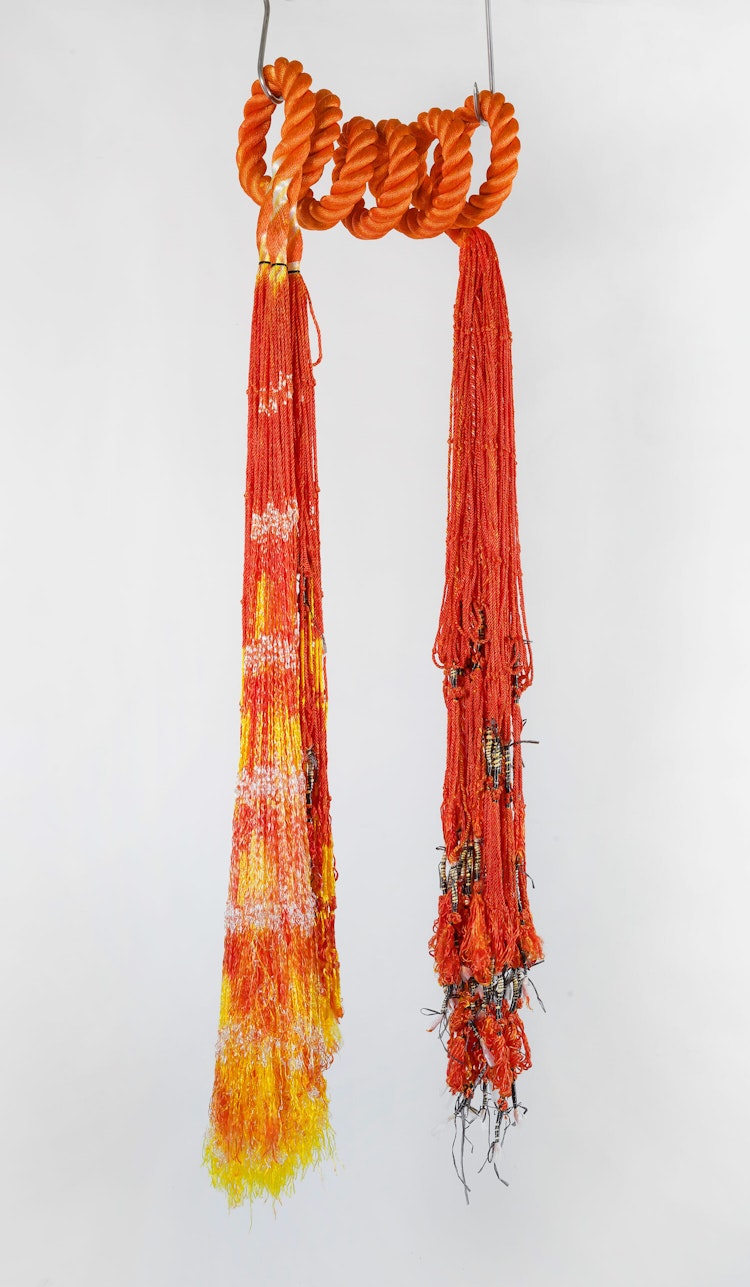
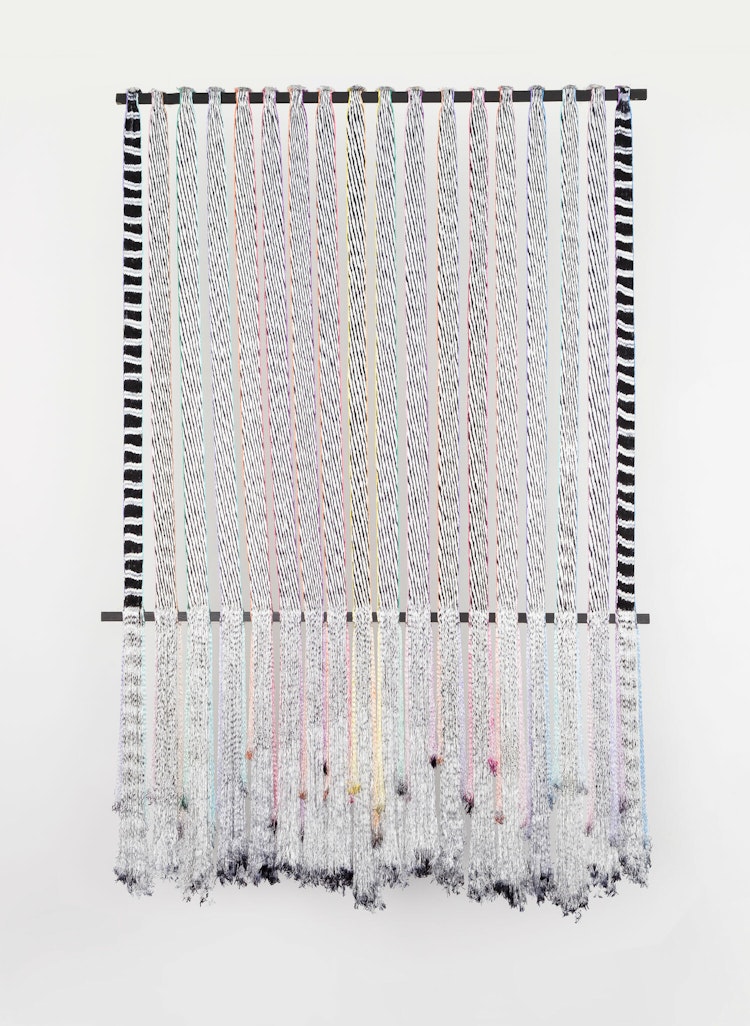
After completing her education in Oslo, Grieg did additional studies in Bratislava and Prague. Many Norwegian textile artists at the time wanted to study in Eastern Europe. The Fibre Art Movement was big, especially in Poland, and it was a favourite travel destination for experimental textile artists. Altogether, Grieg stayed in Czechoslovakia for one and a half years. Afterwards, she set up her practice at Frysja. Several of her colleagues established workshops there as well. In 1978, she signed a contract to rent the workshop she still has today. The room contains both a flat loom and (vertical) warp-weighted loom, but she now works primarily with nylon rope, knotting strands together and dyeing them in strong colours.
'I often create works in groups or series, then try to find colours that are dynamic and can talk together, as it were. But I also want them to have a signal-effect: to be noticeable from a distance. They need to communicate with each other, they shouldn’t fight. And nor should they be too similar. There should be some long ones, some chubby ones, maybe some small ropes in-between. I develop several compositions simultaneously, and when I’m finished, I choose the ones that function together and combine them into groups or series.'
The form and choice of colours come into being through my dialogue with the material. The expression comes through experiences I’ve had with the material, solutions I find throughout the work process. The material drives the work forward.
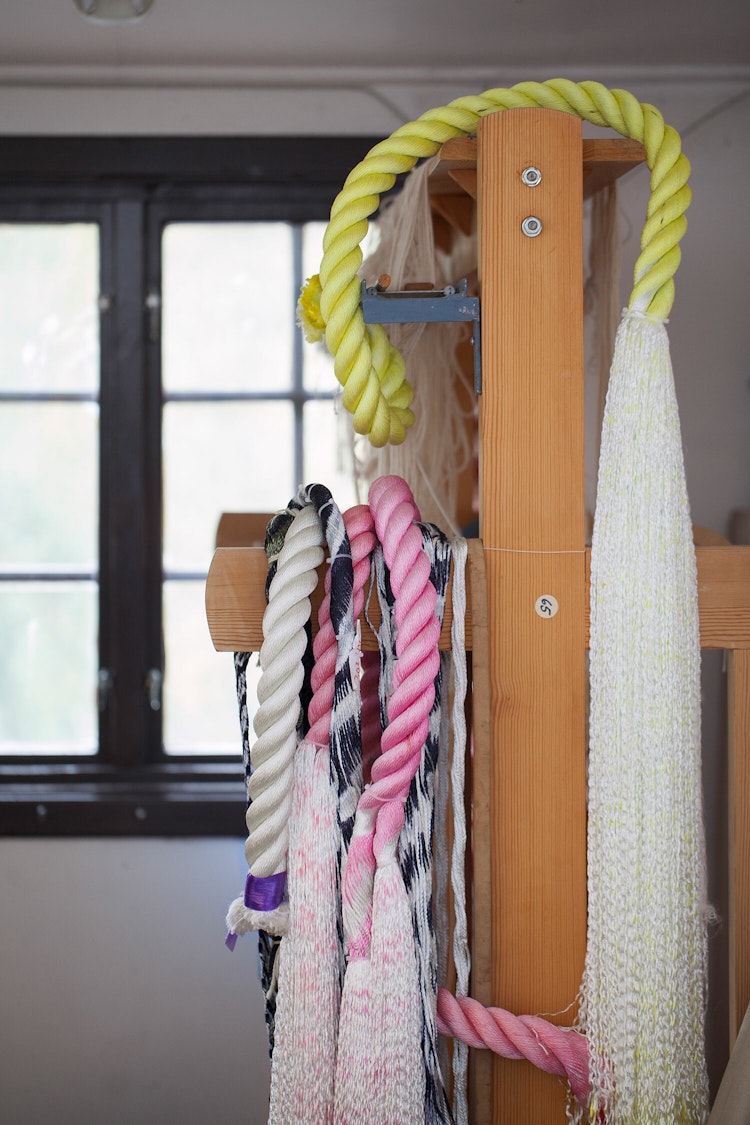
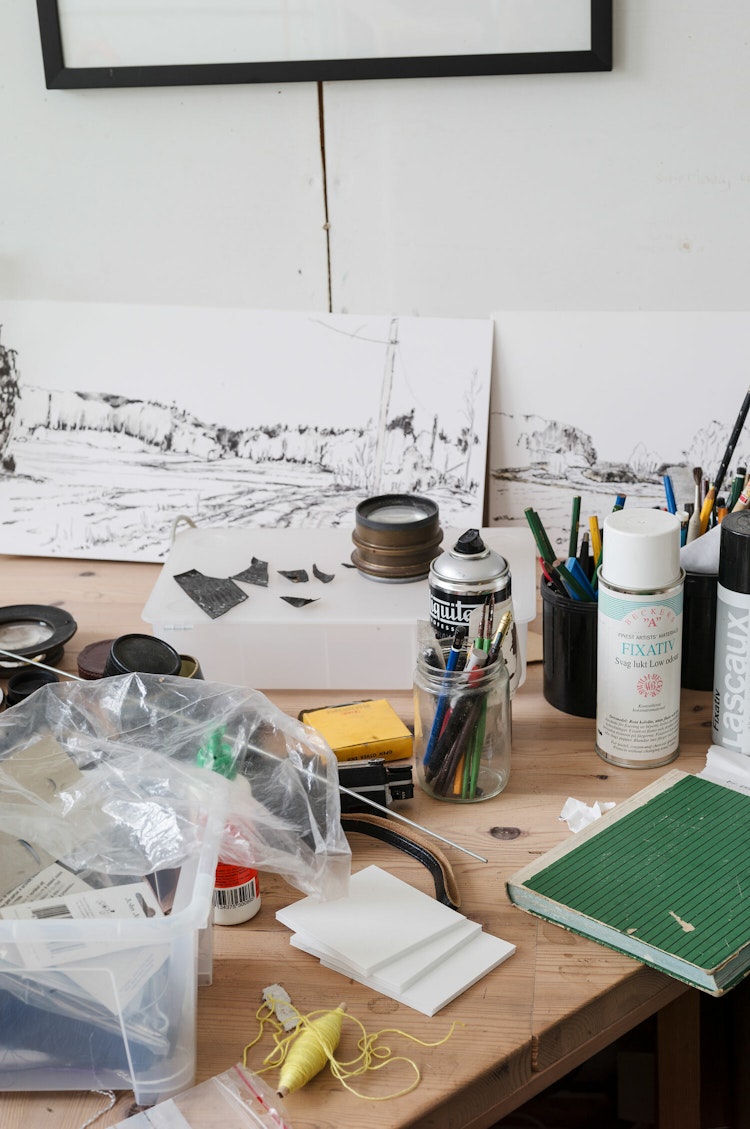
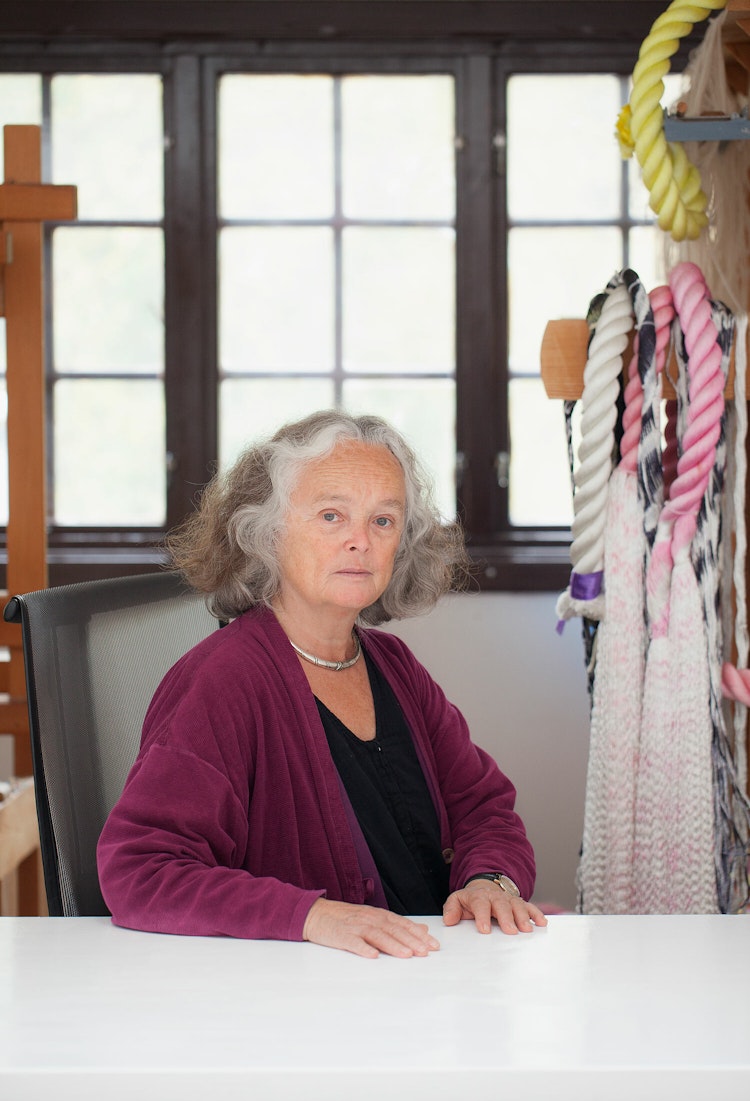
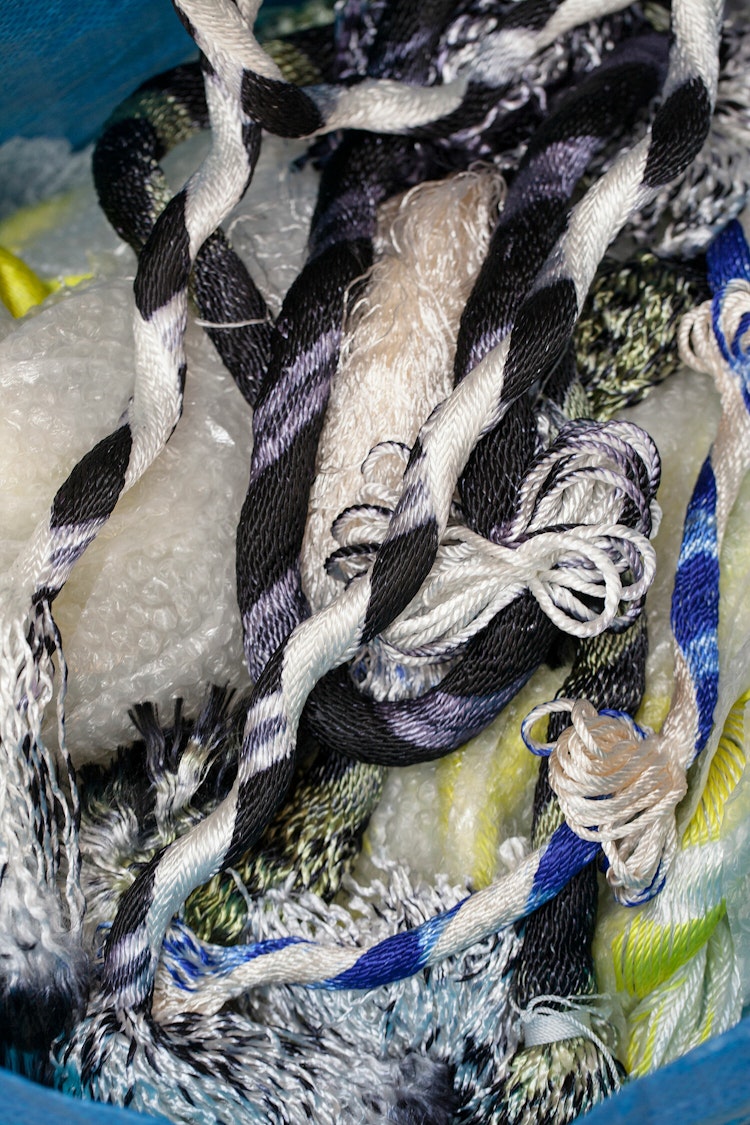
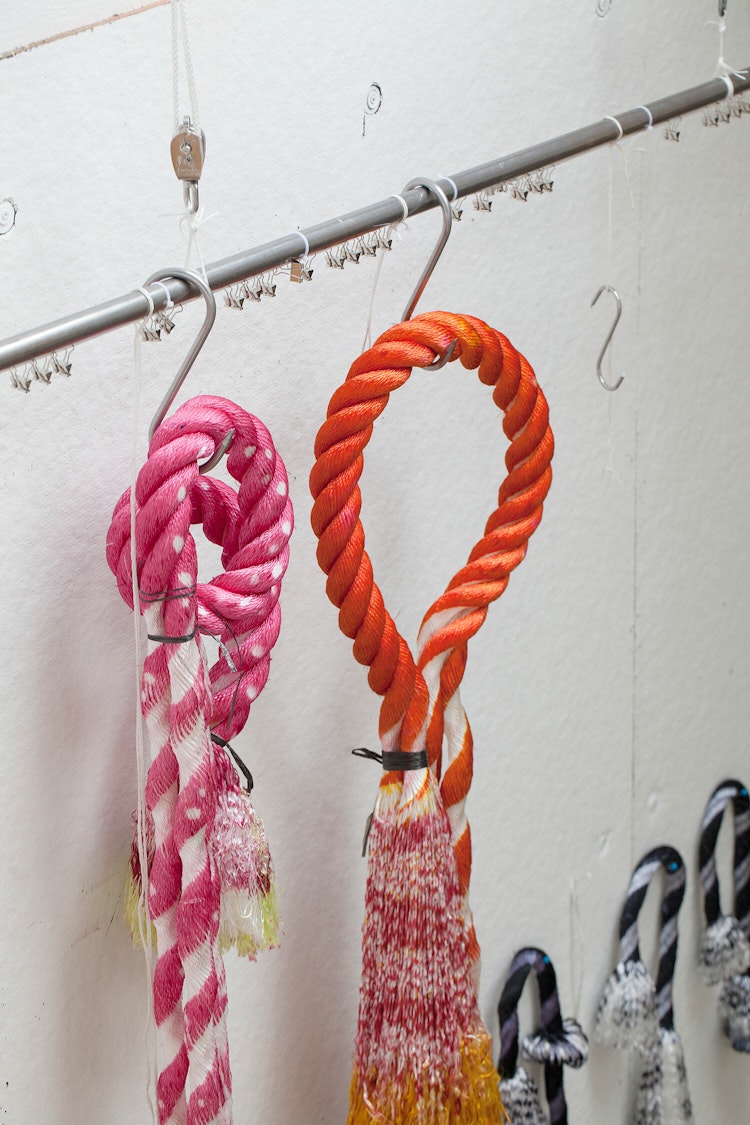
The rope stems from the context of boating, as mooring rope. It comes in large coils, a shape that affects her expression:
'To have enough room in the dye vat for the rope, I had to form it into a spiral. This was also so it wouldn’t move around while it absorbed the dye. I bound the rope together. But then I noticed that the spiral shape held its form, and it was a very nice form.'
It was in Luleå, Sweden, in 1989, that Grieg started working seriously with rope:
'I attended a month-long textile symposium with eight other textile artists, and during that time, I had access to nylon rope. I removed the outermost layer and started loosening up the fibres. This I could do while traveling or on vacation, on trains or boats, and it came to be something I did more and more. I combined the loose ropes into works of art. I also started dyeing them.'
Grieg was not working sculpturally with rope at the time. All her productions were two-dimensional. It was not until she received a visit from the curator Marianne Zamecznik, during the art festival ‘Oslo Open’ in 2015 that she saw the potential to work more sculpturally:
'There were rope coils in the studio that I hadn’t worked too much with, and she [Zamecznik] said that if I didn’t do it, some young hipster would steal the idea. So the next day I started chiefly working three-dimensionally. Also at that time, the artist-run exhibition space ‘Lynx’ invited me to do an exhibition, and I ended up presenting a rope coil hanging from the ceiling.'
Lynx, which was run by Josefine Lyche, was located in a beautiful pavilion in the famous Vigeland Park in Oslo. Grieg talks about the change in her approach that started with this exhibition:
'I feel this is more my thing than the tapestries I worked with for so long. I like the method and the fact that they have their place in the room rather than up against the wall. You move around them and can experience them from different angles.'
I experience my artistic practice as a long-term research project, the goal of which is to create something new. I haven’t thought about the public so much. It’s been important to work with processes, and I’m of course very glad when I’m able to participate in exhibitions.
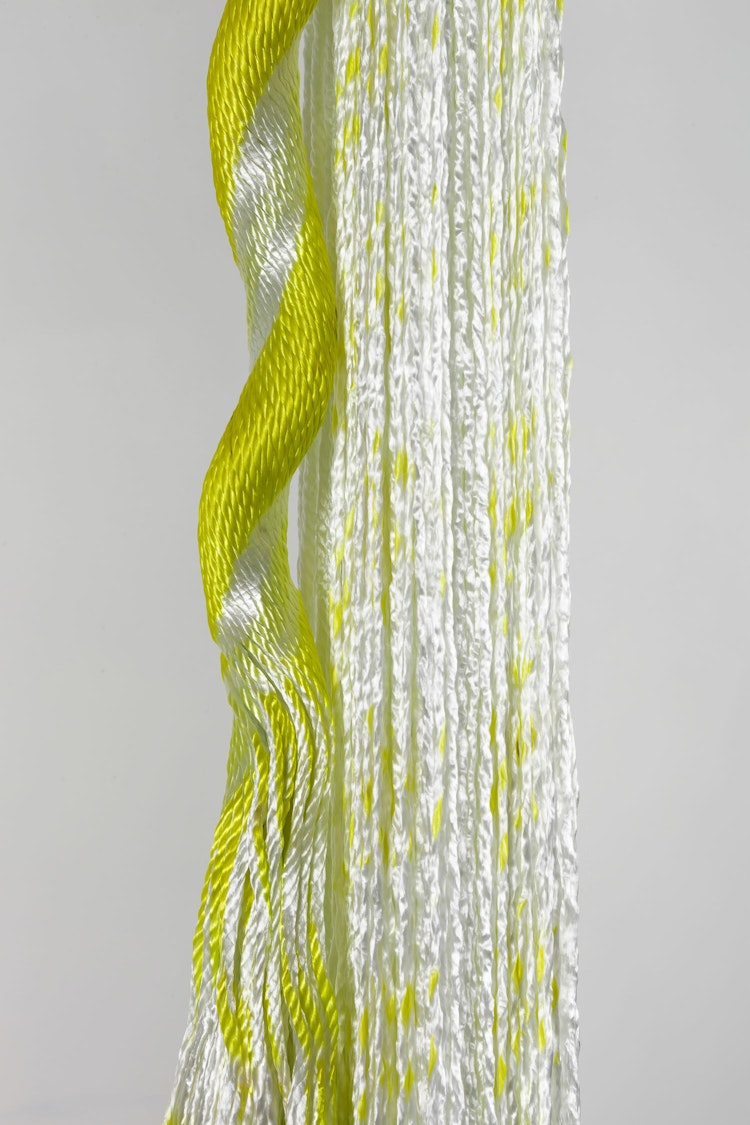
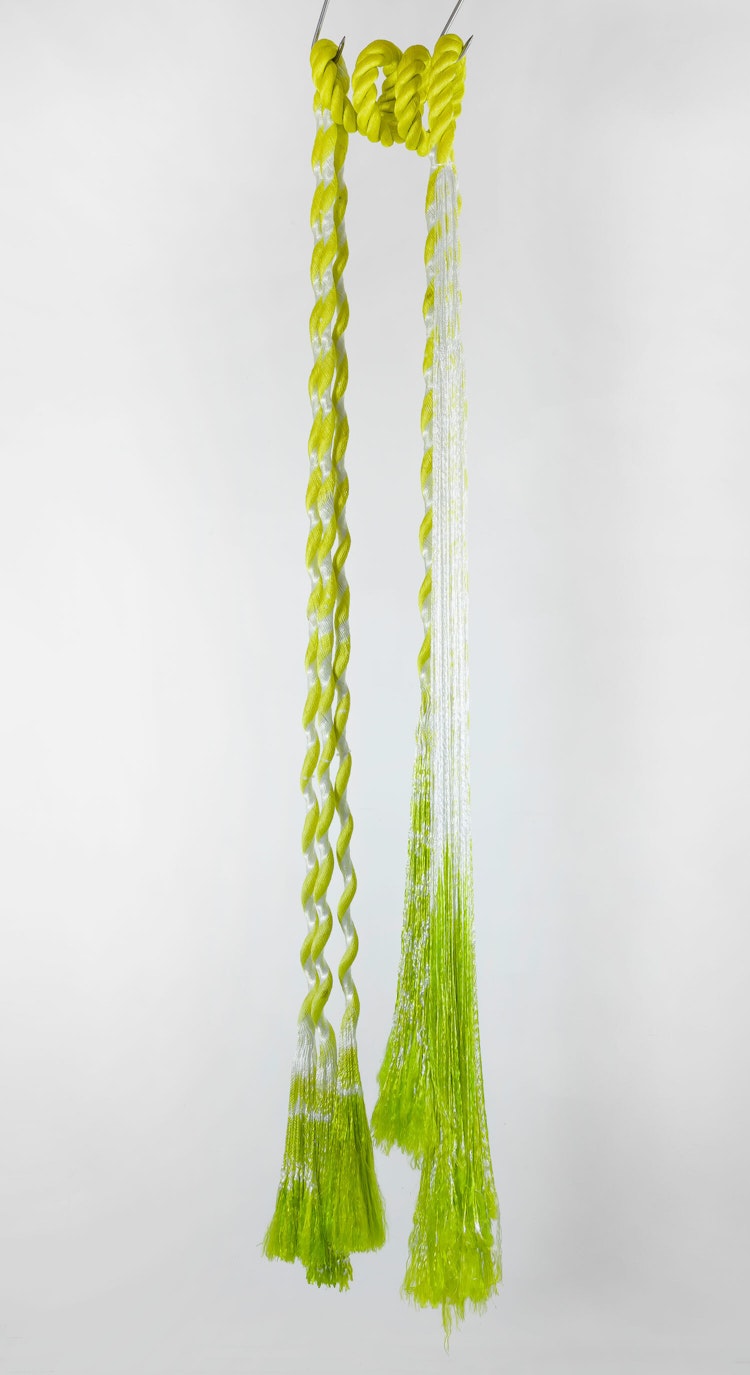
Given that the works are made with mooring rope, they point to nautical themes – sea travel, tying a boat to something fixed, knots. The changes in colour and tactility emerge in an unforced way. Their forms can create associations to seaweed, plankton, microbes or jellyfish.
The form and choice of colours come into being through my dialogue with the material. The expression comes through experiences I’ve had with the material, solutions I find throughout the work process. The material drives the work forward. And they talk together, so I try to make things that stand in relation to each other. If I’ve used one colour on one work, perhaps I use a different colour in another one so that they can converse. Sometimes an accident in the dying process results in something new. There are many chance occurrences, and oftentimes something new emerges when you do something ‘wrong’.
Grieg focuses most of all on her own research and does not care too much about how others interpret her art:
'I experience my artistic practice as a long-term research project, the goal of which is to create something new. I haven’t thought about the public so much. It’s been important to work with processes, and I’m of course very glad when I’m able to participate in exhibitions.'
Grieg has worked for many years at Oslo National Academy of the Arts, as head of the textile workshop, prioritizing this over exhibiting her art. The job has enabled her to have contact with several generations of textile artists who are in the process of establishing a professional career. Parallel to this, she has had collegial relationships with students and well as with her own generation. This gives grounds for speculating over whether she consciously or subconsciously has absorbed new tendencies at the same time as they are emerging. Perhaps this can be one reason why her works seem so contemporary.
'There are some students with whom I’ve had good contact, not necessarily due to the work we do in the studio, but due to conversations. I had no teaching duties, my job was only in the workshop, and perhaps that helped students feel relaxed when talking with me. We talked a lot about techniques and materials, but also about contexts, about working in the field and working with textile expressions.'